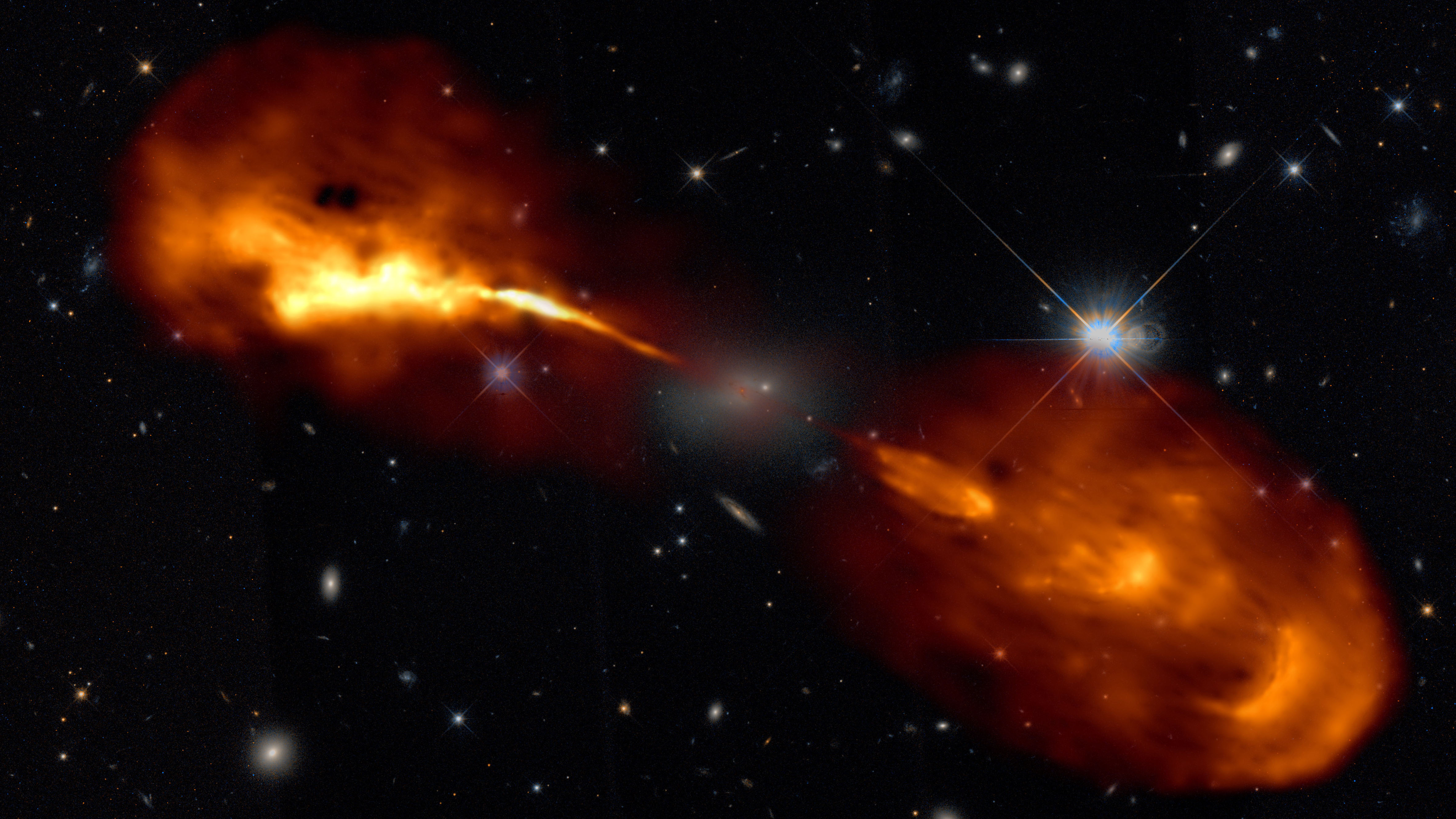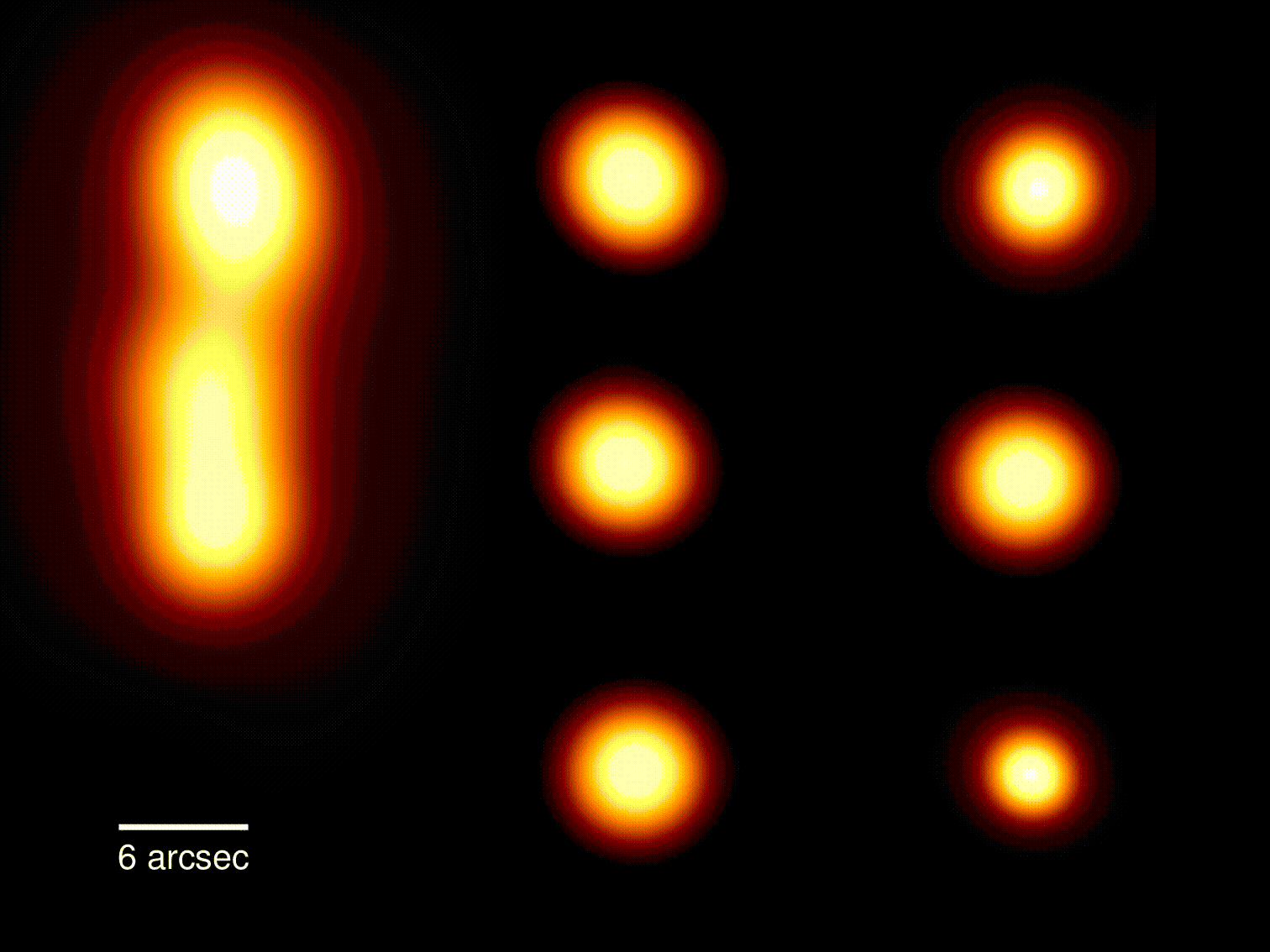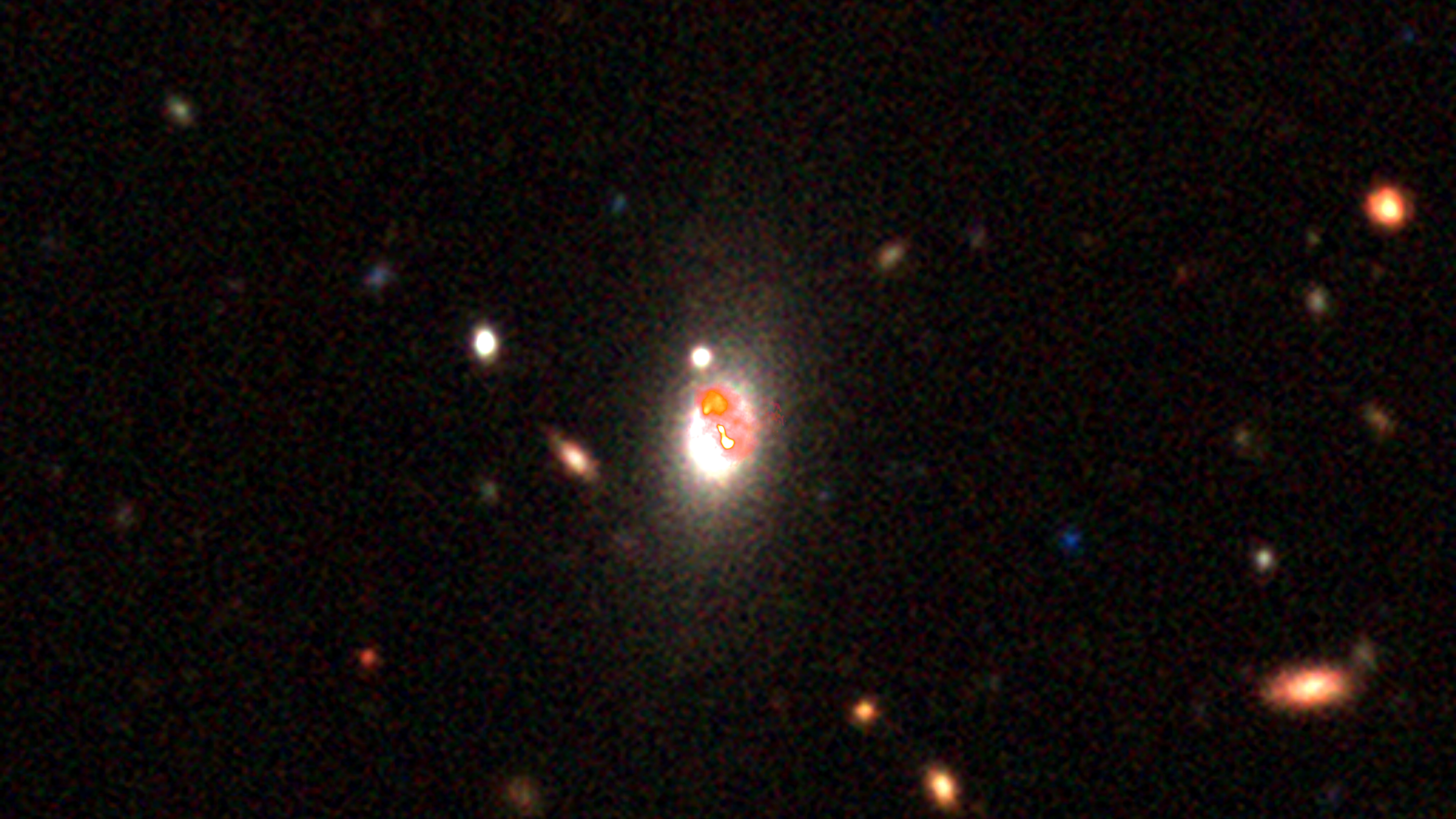Epic radio images give most-detailed views of distant galaxies
FM radio waves reveal a side of the universe invisible to the human eye.

The most detailed radio images of galaxies outside the Milky Way have been captured by a network of 70,000 radio antennas spread over nine European countries.
The images reveal a side of the universe invisible to optical telescopes and provide a glimpse into some of the most mysterious cosmic phenomena, such as the activity of supermassive black holes at galactic centers.
A team of astronomers behind the Low Frequency Array (LOFAR), a radio telescope network managed by the Netherlands Institute for Radio Astronomy (Astron), worked for 10 years to produce the images.
Leah Morabito, assistant professor of physics at the University of Durham in England, led the effort to improve the standard resolution of LOFAR images. By including more antennas and with the help of supercomputers, they improved the resolution by a factor of 20.
Related: The Very Large Array: 40 years of groundbreaking radio astronomy
Morabito told Space.com in an email that the images provide the highest-ever resolution in the FM radio frequency band, a band between 88 to 108 megahertz that is used for radio broadcasting on Earth. The biggest accomplishment, however, was being able to combine this high resolution with a wide field of view, she added.
"That's totally unique," Morabito said. "It will allow us to survey the entire northern sky in just a few years. Telescopes with comparable resolution have a field of view almost 20 times smaller, and therefore an all-sky survey isn't logistically possible. No other current or planned radio telescope will have this combination of field of view and resolution."
Get the Space.com Newsletter
Breaking space news, the latest updates on rocket launches, skywatching events and more!
Celestial objects including stars, some planets and black holes emit radio waves, which are not visible to optical telescopes. Unlike visible light, these radio waves penetrate through clouds of dust and gas, revealing a picture of the universe that would otherwise be hidden.

Supermassive black holes are among the most powerful sources of radio waves in the universe. The LOFAR imaging campaign therefore focused on them, looking for jets of material ejected from these black holes, which can’t be detected in the optical spectrum.
"These high-resolution images allow us to zoom in to see what's really going on when supermassive black holes launch radio jets, which wasn't possible before at frequencies near the FM radio band," Neal Jackson of the University of Manchester in England, who cooperated on the project, said in a statement issued by Astron.
LOFAR usually uses only antennas in the Netherlands. But that limits the diameter of the virtual telescope’s lens to only 75 miles (120 kilometers). The diameter of the telescope, in turn, limits its resolution.

The astronomers, however, found a way to integrate antennas in nine European countries, which enabled them to increase the diameter to 1,200 miles (2,000 km) and achieve 20 times better resolution.
Observations made by the individual antennas were digitized and combined into the final high-resolution images. But that was no easy feat. The scientists had to process 1.6 terabytes of data per second, an equivalent of more than 300 DVDs.
"To process such immense data volumes, we have to use supercomputers,” Frits Sweijen of Leiden University in the Netherlands, said in the statement. “These allow us to transform the terabytes of information from these antennas into just a few gigabytes of science-ready data, in only a couple of days."
Morabito added that it would take 3,000 observations to image the entire northern sky. The images and the scientific papers they spawned were published in a special edition of the journal Astronomy and Astrophysics on Tuesday (Aug 17).
Follow Tereza Pultarova on Twitter @TerezaPultarova. Follow us on Twitter @Spacedotcom and on Facebook.
Join our Space Forums to keep talking space on the latest missions, night sky and more! And if you have a news tip, correction or comment, let us know at: community@space.com.

Tereza is a London-based science and technology journalist, aspiring fiction writer and amateur gymnast. Originally from Prague, the Czech Republic, she spent the first seven years of her career working as a reporter, script-writer and presenter for various TV programmes of the Czech Public Service Television. She later took a career break to pursue further education and added a Master's in Science from the International Space University, France, to her Bachelor's in Journalism and Master's in Cultural Anthropology from Prague's Charles University. She worked as a reporter at the Engineering and Technology magazine, freelanced for a range of publications including Live Science, Space.com, Professional Engineering, Via Satellite and Space News and served as a maternity cover science editor at the European Space Agency.









